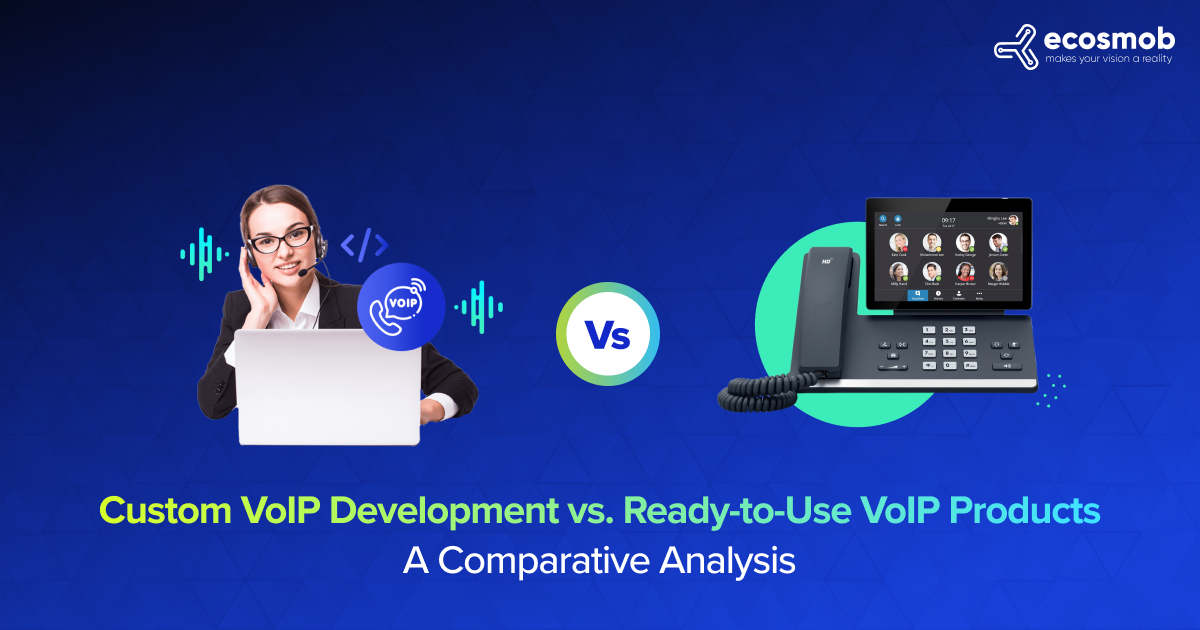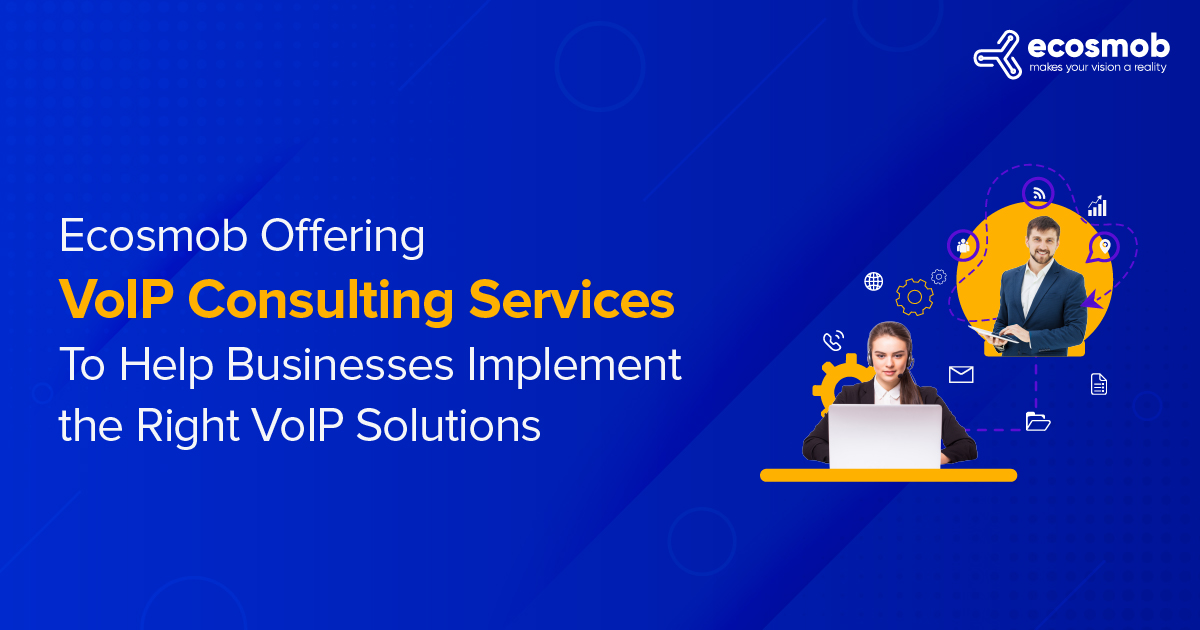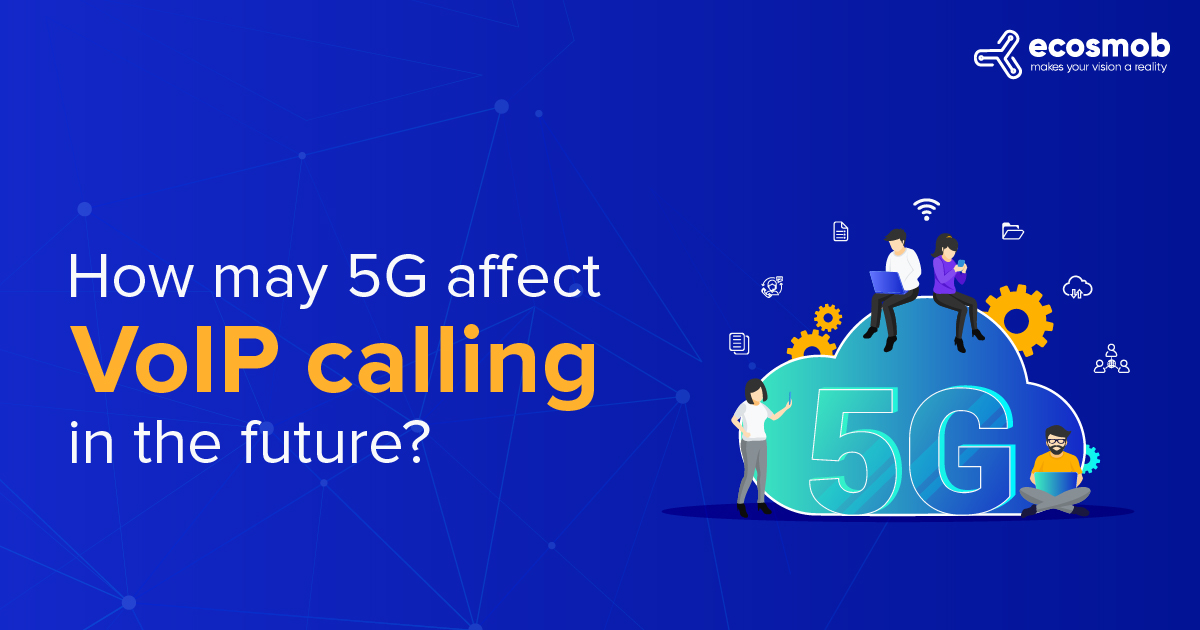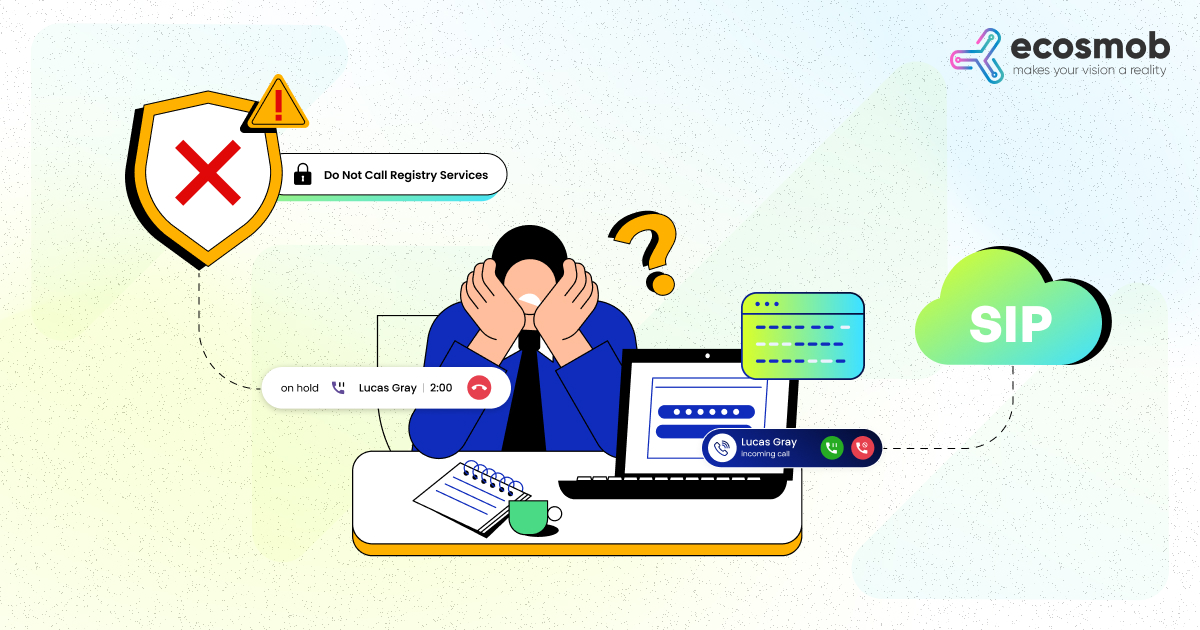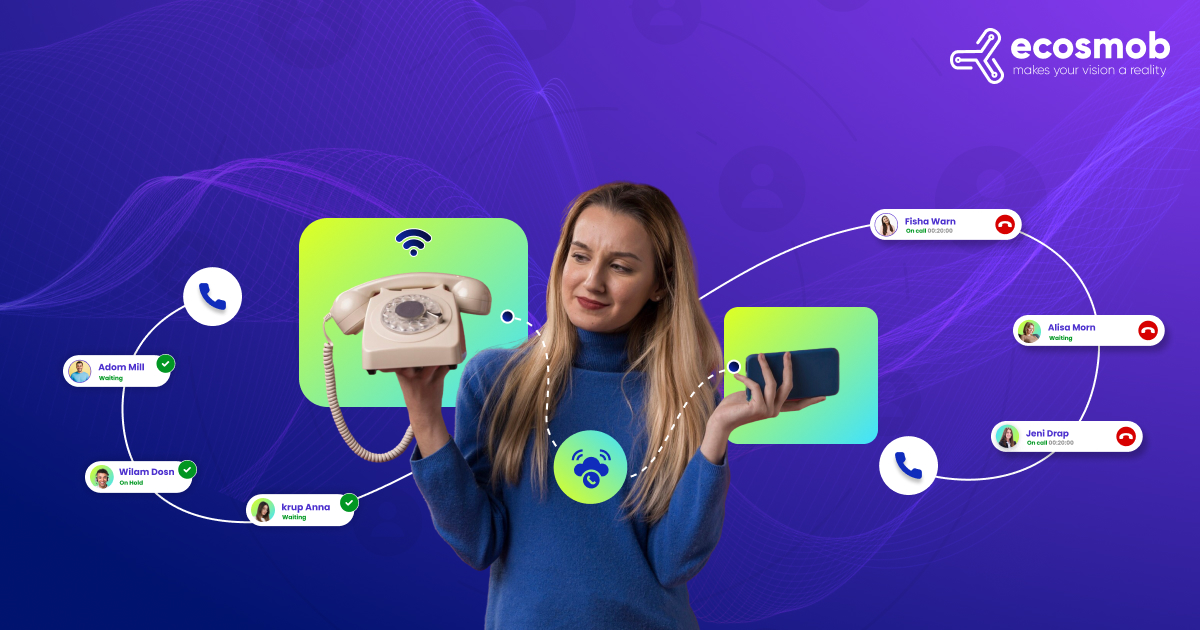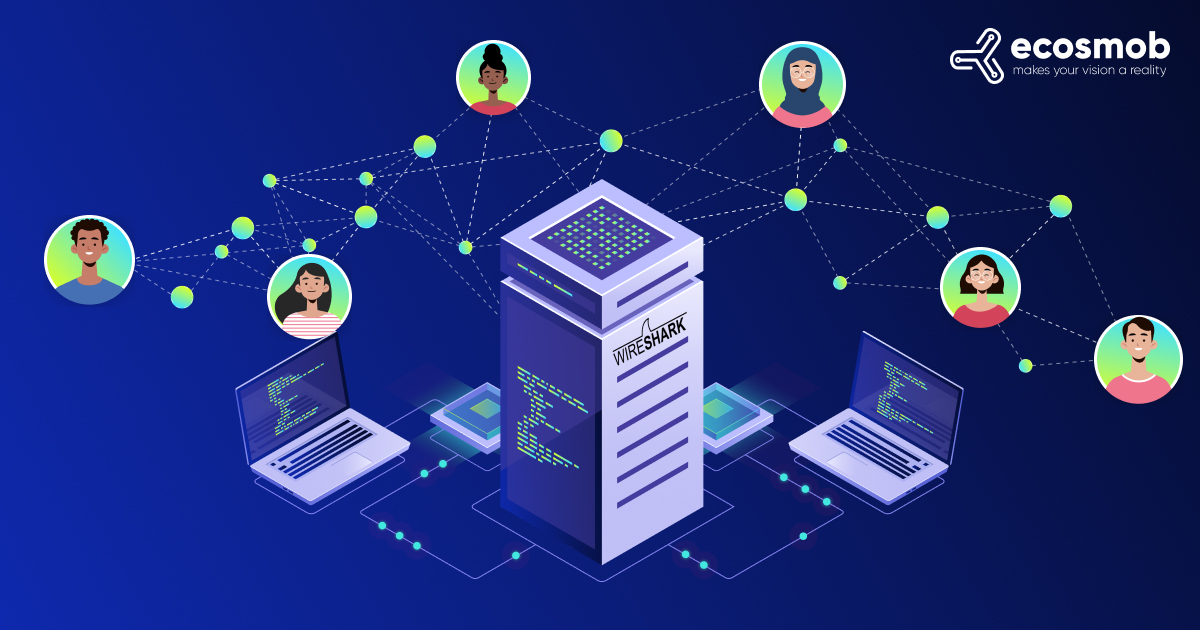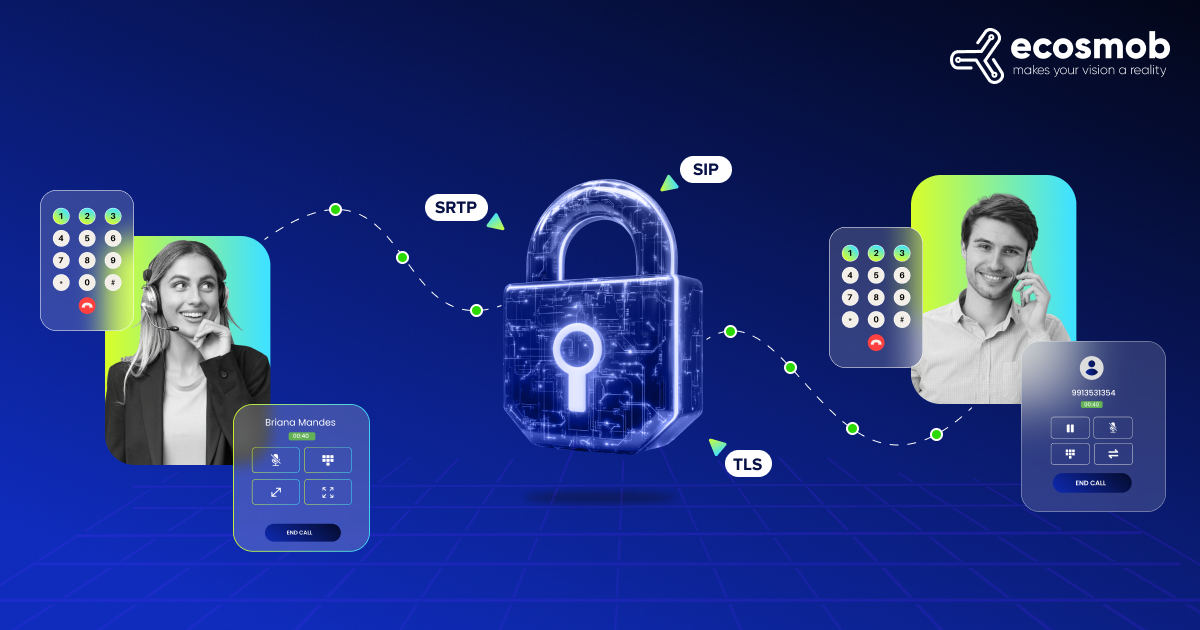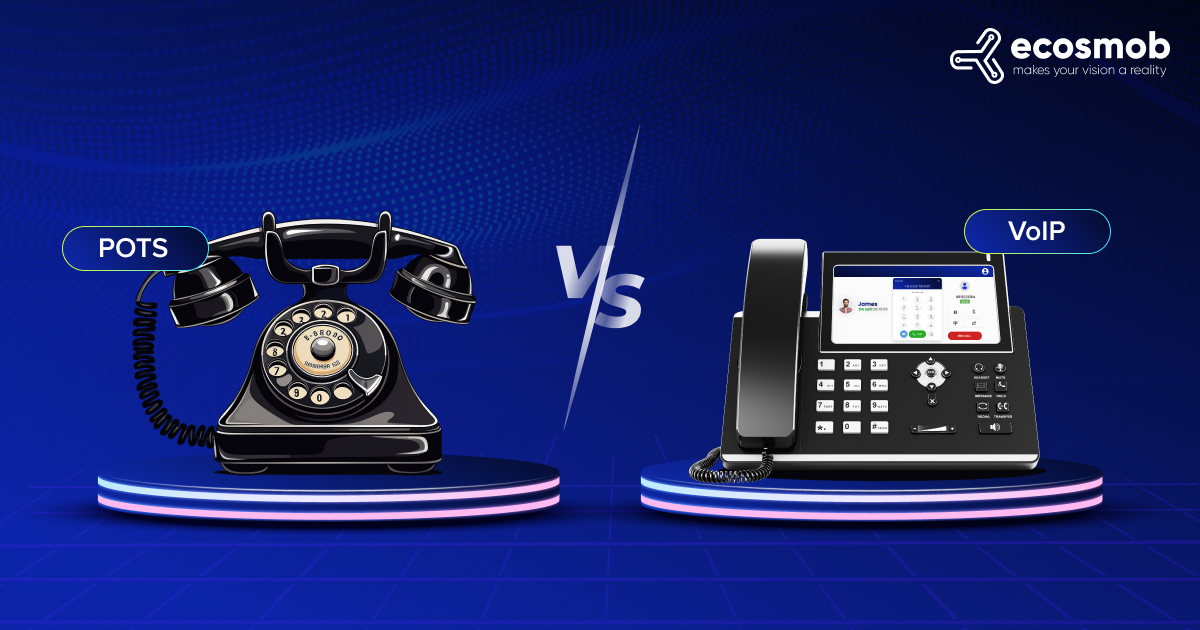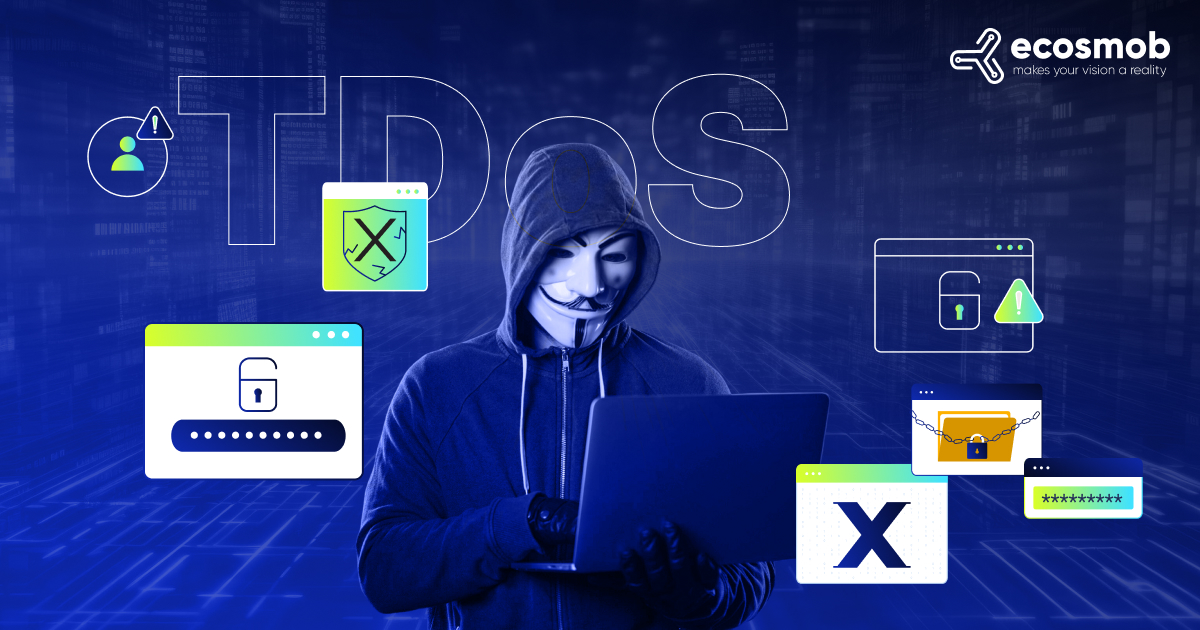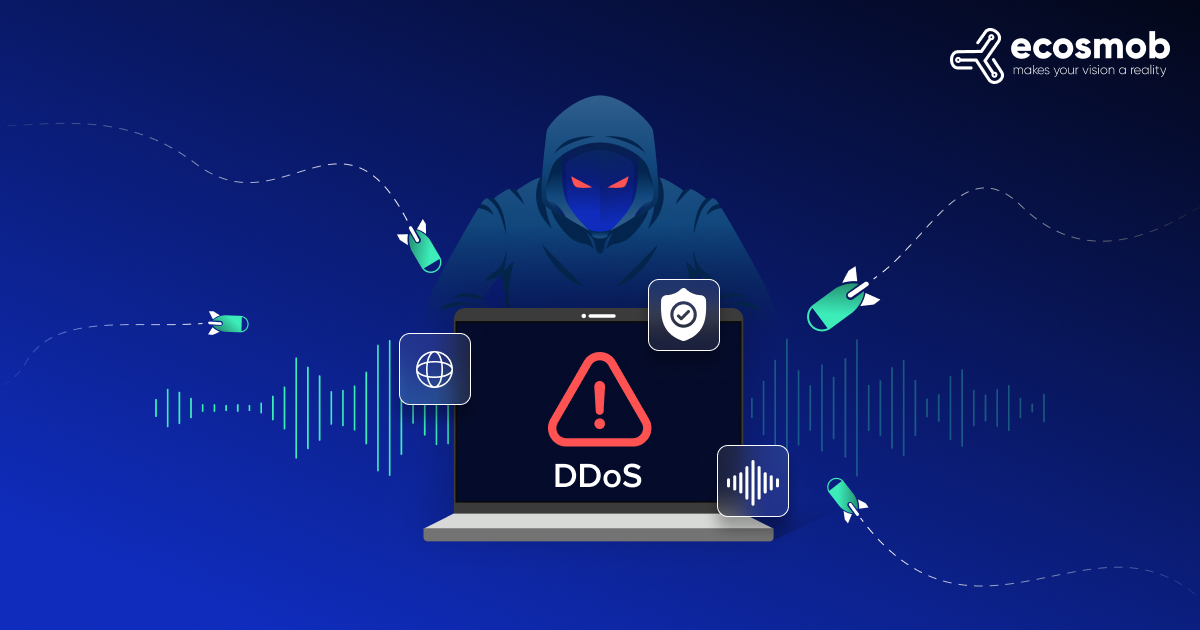QUICK SUMMARY
In this blog, we explore how 5G technology improves VoIP services by delivering ultra-fast speeds, low latency, and reliable connections. Learn how these advancements improve video conferencing, virtual reality, and overall communication for businesses, making 5G VoIP a game-changer in the world of real-time communication.
I still remember the days when I used to use Facebook with a monthly internet pack of just 10 MB, and I could hardly utilize it fully. But today, we have 5G technology. Not 10 MB, but even 1000 MB might not be enough. Why? Because of the speed.
The era has changed, and so has the internet. It is now more efficient, faster, and more effective than ever before. Along with this advancement, VoIP solutions have also gained remarkable capabilities. You might wonder, what are these remarkable capabilities?
With advanced 5G technology, you can improve the voice and video quality of your calls, increase bandwidth, and much more. So, what else is there? Let’s see!
Partner with Ecosmob for your VoIP success
How will 5G VoIP have a significant impact on businesses?
Communication is essential for small and medium sized businesses (SMBs). To ensure the success of one’s SMB, using the right technology resources is vital. Short for fifth generation wireless systems, 5G VoIP is changing essential technology solutions.
1. Internet protocols
There was a time when international calls were something you planned carefully. You watched the clock, kept conversations short, and hoped the call quality didn’t ruin everything. Fast forward to now, and VoIP has completely changed the story. Businesses can connect with clients across the globe or across the street, all while keeping their communication costs low. It’s simple, efficient, and surprisingly affordable.
The reason it works so well lies in Internet protocols. These are the invisible engines that allow voice signals to travel over the internet just like any other form of data. With this in place, users can manage calls directly from their computers or smartphones without needing any complicated setup. It turns calling into something flexible and smart, instead of being tied to traditional phone lines.
Now comes the exciting part. As 5G becomes more widely available, it is set to transform how we think about communication once again. The fifth generation of wireless connectivity offers faster speeds, more stable connections, and the ability to handle more data at once. For VoIP systems, that means better voice quality, crystal clear video calls, and a much smoother experience overall.
For businesses, this is not just about keeping up. It is about stepping into a future where communication is instant, reliable, and designed to support growth. Understanding how 5G and VoIP work together will be key to building stronger, more connected teams in the years ahead.
2. Gradual Rollout
Not everything changes overnight, especially when it comes to new technology. While 5G is making headlines everywhere, the rollout is still happening in stages. That means many VoIP users will continue to rely on existing 4G networks for a while, especially in areas where 5G coverage is still catching up. It is a bit like upgrading to a new car but still driving on older roads for some time.
Most internet phones are designed to fall back on 4G when WiFi is not available or the signal drops. This keeps the connection steady and calls uninterrupted. It may not deliver the full speed and power of 5G, but it ensures that users are not left hanging in the middle of a conversation.
VoIP systems have always been quick to embrace better technology, and 5G is no exception. But even with all the excitement around faster speeds and better quality, a lot of the early traffic will continue to run on 4G. This gradual shift is normal, and it gives users time to adjust without losing reliability.
For those planning to use VoIP over 5G, it is important to stay informed about how the rollout is progressing in their area. Keeping track of coverage zones and network upgrades can help businesses make smarter decisions when it comes to upgrading their communication systems. The future is fast approaching, but patience during this transition will pay off in the long run.
What are the Benefits of VoIP over 5G Network?
5G VoIP can have some noticeable benefits over its earlier 4G iteration. Let’s understand how 5G rollouts could improve the VoIP experience with high capacity and low latency.
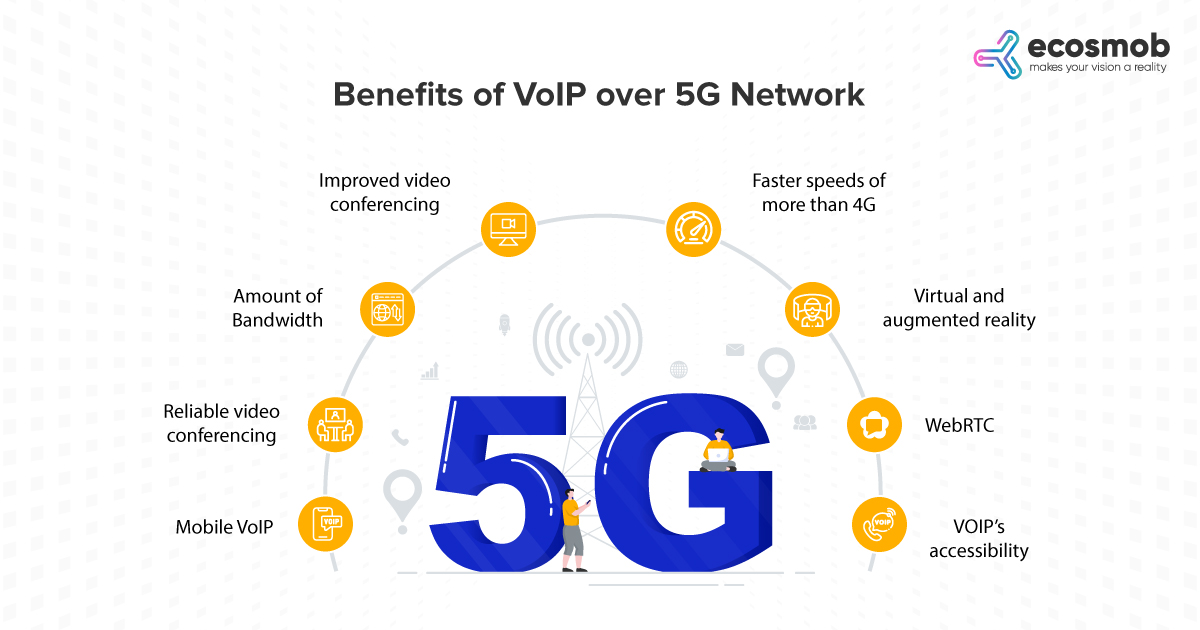
1. Improved video conferencing
Video conferencing has become one of the most relied upon tools in business communication. What used to be a feature limited to high end setups is now a basic expectation for remote teams, virtual meetings, and client presentations. VoIP phones play a big role in this shift by offering a broader, more flexible way to stay connected.
With the introduction of 5G, VoIP’s capabilities in handling high quality video conferencing have taken a big step forward. The faster speeds and reduced latency help ensure that video streams run smoothly and without delay. This means clearer images, fewer interruptions, and a more natural conversation flow even during long meetings or large virtual events.
One of the most exciting parts is the ability to support high resolution video formats. With 5G in place, 4K and even 8K video quality can become standard in business calls. That means sharper visuals, more lifelike interactions, and a better overall experience for everyone on the call. Whether it’s a daily team huddle or an international conference, the quality boost is easy to notice.
For businesses aiming to deliver professionalism and clarity in every conversation, this improvement in video conferencing through VoIP over 5G is more than a technical upgrade it is a new way to connect with confidence.
2. Faster speeds of more than 4G
Speed has always been at the heart of better communication. With 5G now entering the scene, the experience of using VoIP is changing for the better. One of the biggest improvements users will notice is how quickly calls connect and how smoothly they run, especially compared to 4G. The increased speed means there are fewer delays, less buffering, and almost no chances of stuttering audio or frozen video during a call.
This becomes especially important during busy hours when networks are often overloaded. With 5G, VoIP can handle large amounts of data at once, allowing for voice and video calls to remain stable and clear, even when many users are online. That reliability helps both businesses and individual users stay focused on the conversation, rather than dealing with technical issues.
What makes it even more convenient is the simplicity of setup. VoIP over 5G only needs two things to function a VoIP account and an internet connection. Once those are in place, the faster speeds provided by 5G instantly improve the quality of communication. It is a straightforward solution to meet the growing demand for quick and uninterrupted voice and video exchanges.
As users expect more from their UC communication tools, 5G steps in to make sure VoIP keeps up with those demands. The jump in speed does more than just save time it helps build smoother, more reliable conversations.
3. Amount of Bandwidth
Bandwidth plays a critical role in how well your calls perform, especially when multiple users are online or when large amounts of data are being transferred. With 4G, there is a fixed limit to how much traffic the network can handle at any given time. That limit can lead to congestion, slower speeds, and disruptions in call quality, particularly during peak hours.
This is where 5G starts to show its real power. Unlike 4G, 5G manages bandwidth more intelligently. When one area of the network becomes overloaded with traffic, the system can automatically shift users to another section with less activity. This helps maintain a smooth and uninterrupted calling experience, even when usage is high.
For VoIP users, this means video and audio calls can remain consistent, clear, and free from the usual glitches. We’ve all experienced that moment when a video call freezes or the sound cuts out mid sentence. These issues often come down to bandwidth limitations, and 5G is designed to handle them better.
By offering broader and more flexible use of available network space, VoIP over 5G becomes a far more dependable solution. It not only improves the way calls are made but also helps businesses rely on video communication without worrying about technical hiccups. In a world where clarity and connection matter more than ever, this change in bandwidth management gives VoIP users a noticeable edge.
4. Virtual and augmented reality
Virtual reality and augmented reality have long been seen as cutting edge technologies, often reserved for large corporations or specialized industries. However, with the power of 5G VoIP, these immersive technologies are becoming accessible to small and medium sized businesses as well. This opens up exciting new possibilities for how companies can engage with customers, train employees, or showcase products.
Both virtual and augmented reality require the rapid transfer of large amounts of data to work smoothly. Thanks to 5G’s advanced network capabilities, this heavy data processing can now happen efficiently even over mobile connections. This means businesses no longer need expensive or complex infrastructure to take advantage of VR and AR solutions.
What’s more, 5G helps reduce common issues like network delays and VoIP jitter that can ruin the experience. Mobile users benefit from faster responses and smoother interactions, making virtual and augmented reality feel more natural and effective. Whether it is a remote support session, an interactive demo, or a training module, 5G VoIP provides the reliable foundation these technologies need to deliver impressive results.
For businesses looking to innovate and offer unique experiences, 5G powered VoIP is a crucial enabler that makes these futuristic tools practical and impactful today.
5. Reliable video conferencing
One of the standout features of 5G technology lies in its advanced design, particularly the Radio improved Architecture, often known as REA. This architecture supports ultra reliable and low latency communications, or URLLC for short. These terms might sound technical, but they have a simple and important impact on how we experience voice and video calls.
High reliability means that calls connect quickly and stay connected without unexpected drops. Low latency refers to minimal delay in transmitting voice and video data, so conversations happen in real time without awkward pauses or lag. Together, these qualities are essential for services like VoIP that depend on clear, smooth communication.
Thanks to 5G’s focus on these features, video conferencing becomes much more dependable. This is especially important for businesses where every second of communication counts whether it’s a crucial client meeting, a remote team collaboration, or customer support. The improved availability ensures that even during busy network times, users can rely on their calls to work seamlessly.
By combining ultra reliability with lightning fast responsiveness, 5G takes VoIP video conferencing to the next level. It delivers an experience that feels natural and uninterrupted, making virtual meetings more effective and less stressful for everyone involved.
6. WebRTC
WebRTC is quickly becoming a global standard for real-time communication, and when combined with 5G, it promises to revolutionize how we build voice and video applications for VoIP. Although WebRTC has been around for many years, its full potential is just beginning to unfold as network technology catches up.
This open source framework allows developers to create seamless, browser based communication tools without the need for additional plugins or software. The real magic happens when WebRTC leverages the fast speeds and low latency of 5G networks. Together, they enable crystal clear voice calls and smooth video chats with minimal delay.
As more businesses adopt 5G, WebRTC will play a crucial role in shaping the future of VoIP communications. It provides the foundation for innovative apps that are easier to use, more reliable, and accessible across devices. This combination makes it simpler than ever for companies to deliver high quality, real time communication experiences to their users.
In essence, WebRTC paired with 5G is set to be a game changer in the way we connect, collaborate, and communicate around the world.
7. Mobile VoIP
With the arrival of 5G, mobile VoIP networks are opening up new possibilities for businesses, especially when it comes to advertising and telemarketing. The improved speed and reliability allow companies to reach potential customers more effectively and run campaigns with greater precision. This means sales teams can connect with leads faster, follow up in real time, and ultimately drive higher conversion rates.
For businesses aiming to harness the full power of mobile VoIP over 5G, building or partnering with a dependable VoIP service provider is essential. Working with a trusted company ensures that your network meets all critical requirements, from security to scalability. This collaboration helps create a robust infrastructure that supports not only communication but also business growth.
In today’s fast paced market, leveraging mobile VoIP powered by 5G can give companies a real competitive advantage. It makes advertising more targeted, telemarketing more responsive, and lead generation more effective all while keeping costs under control.
How will 5G change the future of VoIP Technology?
Let’s discuss some technical aspects to differentiate 5G from its predecessor.
1. Latency
Latency is one of the key challenges in networking and communication technology. Simply put, latency measures the total time it takes for a piece of data to travel from one device to another. In today’s best 4G networks, latency is typically around 50 milliseconds. While this is already fast enough for many uses, it still can cause slight delays or lag during voice and video calls.
With the arrival of 5G, this number is expected to drop dramatically to just 1 millisecond. That is fifty times faster than what we have now. For VoIP services, this reduction means users will enjoy a near real time communication experience. Calls will connect instantly, and issues like dropped connections or audio and video freezing will become far less common. This leap in speed and responsiveness transforms how smoothly conversations flow and makes remote collaboration feel much more natural.
2. Speed
Speed is another important factor driving the future of VoIP. With 5G technology combined with advanced frameworks like WebRTC, VoIP providers are preparing to offer video calls at resolutions previously thought impossible for mobile networks. Soon, 8K video calls could become a reality, bringing crystal clear images and an immersive experience to everyday communication.
This boost in speed not only improves video quality but also supports larger meetings, more participants, and richer multimedia sharing during calls. For businesses and individuals alike, faster speeds mean more seamless interactions, better engagement, and the ability to rely on VoIP for everything from casual chats to high stakes presentations.
The fusion of 5G’s speed with cutting edge VoIP technology promises a new era where communication is faster, clearer, and more reliable than ever before.
In summary, 5G is set to revolutionize the way we use VoIP by bringing faster speeds, lower latency, and more reliable connections. This new generation of wireless technology not only improves the quality of voice and video calls but also opens doors to advanced features like virtual reality and ultra high definition conferencing. As businesses and individuals increasingly rely on seamless communication, 5G powered VoIP will become an essential tool for staying connected and competitive in a fast moving world.
Using new communication tools today prepares us for better communication in the future.
At Ecosmob, we combine deep industry expertise with cutting edge technology to deliver VoIP solutions tailored to your business needs. Our commitment to innovation ensures you stay ahead with reliable, scalable, and future ready communication systems. Partner with Ecosmob to unlock the full potential of 5G powered VoIP and transform the way you connect.
Get in touch with us today and take your business communication to the next level!
Upgrade your VoIP with Ecosmob and 5G today!
FAQs
How does 5G improve VoIP call quality?
5G significantly improves VoIP call quality by reducing latency, increasing bandwidth, and minimizing packet loss. These improvements lead to more stable voice and video calls with fewer dropouts and improved clarity.
Does 5G affect phone calls made through VoIP systems?
Yes, 5G can positively affect phone calls made using VoIP systems. With better network performance, users experience faster call setup times, clearer voice signals, and improved video communication.
Is upgrading to 5G enabled business phones worth it for VoIP?
Upgrading to 5G enabled business phones can future proof your communication system. These devices can take full advantage of 5G capabilities, offering better call quality, smoother video conferencing, and seamless app performance.
What are the benefits of using VoIP on a 5G network?
Benefits of VoIP on a 5G network include ultra fast connection speeds, consistent high quality audio and video calls, reduced call latency, and better performance in high traffic environments. Businesses also gain improved support for technologies like virtual reality and IoT.
How does 5G impact video conferencing for businesses?
5G enables video conferencing in ultra high definition including 4K and 8K resolutions. It reduces lag and jitter during calls, making virtual meetings smoother and more productive, especially for teams working remotely.



